Top 10 most important cannabinoids in cannabis
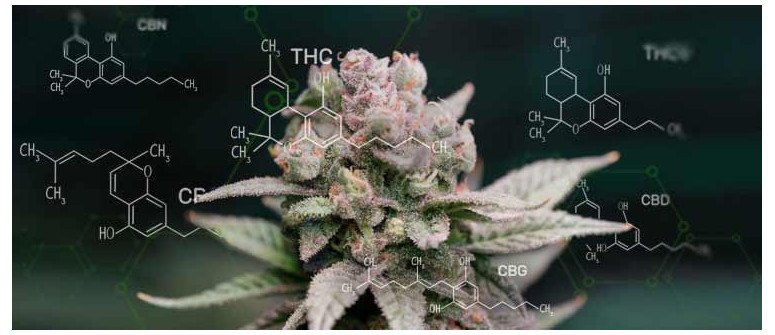
Cannabinoids—the world's full of them! Especially in the cannabis plant. Though they don't all get you high like THC, that's not to say they don't all have interesting, and potentially beneficial, roles to play. Discover the 10 most important cannabinoids in cannabis.
Contents:
There are so many cannabinoids, and each seems to offer something unique. Amazingly, they all stem from the cannabinoid acid CBGA, aka the "mother cannabinoid". The world of cannabinoids can seem like hype sometimes, and maybe some of it is. But without detailed and thorough research, we can’t know what these amazing molecules are fully capable of. Still, from what we know thus far, a large share of cannabinoids from the cannabis plant display impressive attributes them make them more than worthy of additional study.
Let’s explore some of the essential info about cannabinoids, before moving on to our list of the 10 most important cannabinoids in the cannabis plant.
What Are Cannabinoids?
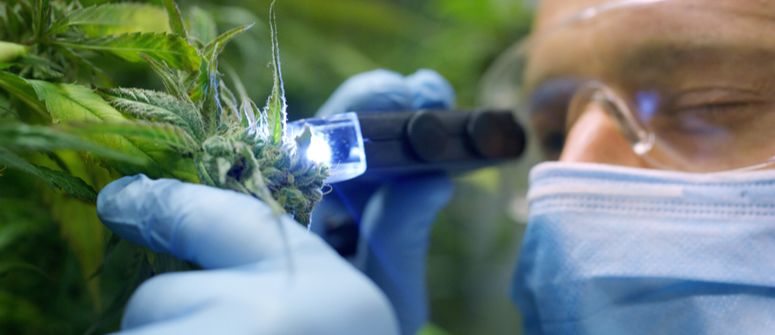
Cannabinoids are a broad range of chemical compounds that occur naturally in plants and animals. Despite the name, they’re not just limited to our stinky green friends—our very own bodies produce them too. When they are produced in an animal body, they are known as endocannabinoids. The bodily system with which they interact is thus aptly known as the endocannabinoid system (ECS).
Though relatively understudied, the ECS is thought to play an important and wide-ranging role in the body, relating to homeostasis, cognitive function, motor control, and much more. There are two main cannabinoid receptor types present in the human body—CB1 receptors and CB2 receptors—however, TRPV1 and TRPM8 receptors, among others, also play vital roles in understanding cannabinoids’ relationships with the body.
In plants, cannabinoids are known as phytocannabinoids. They are thought to protect the plant against pest insects, disease, light/heat, and more. For instance, cannabis plants that are exposed to excess UVB light can express up to 28% more THC compared to the same plants grown under normal conditions. One conclusion drawn from this is that THC plays a crucial role in protecting cannabis plants from excess light.
How Do Cannabinoids Work in the Body?
Cannabinoids are produced in the trichome glands of cannabis plants—small, mushroom-shaped growths that appear on the flowers and leaves.
There are many different types of cannabinoids, and some are precursors to others. When ingested by humans, they tend to work by binding to CB1 and/or CB2 receptors. Some work in a more roundabout way. For instance, CBD works by inhibiting the breakdown of anandamide, a crucial endocannabinoid and CB1 agonist, raising its levels in the body and ultimately benefitting the ECS in turn.
There is no single way cannabinoids work. What brings them all together initially is that they all descend from cannabigerolic acid (CBGA). From here, certain processes and genetic dispositions cause plants to express certain cannabinoids in greater or lesser abundance.
How Many Cannabinoids Are in the Cannabis Plant?
There are 113 known cannabinoids found in the cannabis plant. It is likely this number may grow, as research is greatly increasing. While some occur in high concentrations, others are only found in trace amounts, which makes studying their potential effects very difficult. Furthermore, not all cannabinoids are present at the same time.
What Are the 10 Most Important Cannabinoids?
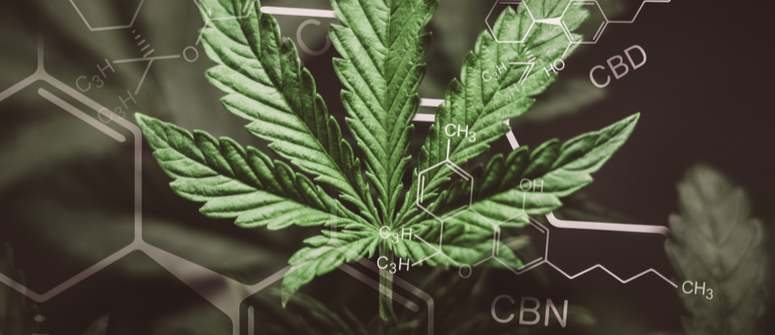
There are bound to be some features on this list that you’ve definitely heard of, and others you haven’t. Given what we know thus far, these are the 10 most important cannabis-derived cannabinoids, but a lot of it comes down to the current body of research. It could well come to pass that some lesser-known cannabinoids are successfully isolated and become some of the most important of all.
But for now, without further ado, check out the top 10 most important cannabinoids.
THC
This one needs little introduction. Delta-9-THC is the most famous cannabinoid, and with good reason. Packing the psychotropic punch that people know and love, it is this compound that produces feelings of elation and relaxation in many users. Used for thousands of years across humanity, the effects of THC have long been known.
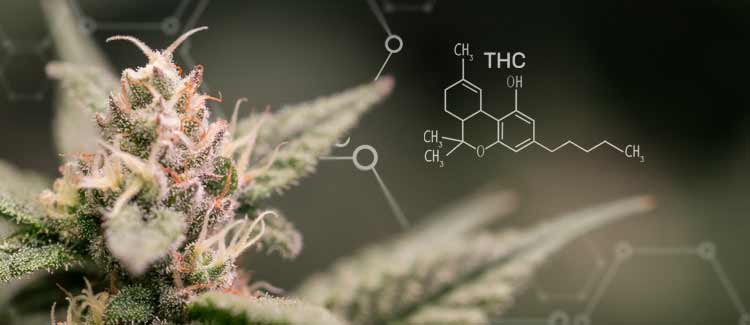
Effects of THC
THC produces a powerful psychotropic effect. It does so by binding directly to CB1 receptors in the brain. And how does this cause a high? By causing a decrease in the concentration of the second messenger molecule cAMP through inhibition of adenylate cyclase.
Potential Benefits of THC
There’s a lot of research going into THC and its potential uses, particularly as a potential treatment for multiple sclerosis and other neurodegenerative disorders. The potential uses are thought to be far broader than this, though, and it is being studied in relation to many physical and mental illnesses.
However, of all the cannabinoids, it is THC that seems most capable of causing damage, too. Though the exact mechanisms are unknown, there is a link between THC and increases in certain mental illnesses. What is not known is whether this is an inherent characteristic of THC interacting with the human brain or an aberration dependent on certain individuals.
CBD
Cannabidiol has taken the world by storm in the last few years, and is fast becoming as well-known as THC. Interestingly, THC and CBD are very different molecules. Whereas THC has an affinity for CB1 and CB2 receptors, CBD has almost no direct interaction with them. Rather, CBD appears to bind with the serotonin 1A receptor and influences the production of anandamide. It is this that is thought to be behind the lion’s share of CBD's physiological effects.
CBD is found more readily in hemp plants, and often its concentration is very small in high-THC strains. However, this is changing. Over the last few years, breeders have been specifically developing strains with high concentrations of CBD, sometimes in a 1:1 ratio with THC. In fact, it is possible to buy weed with a CBD content of over 20% and a THC content of <0.3%.
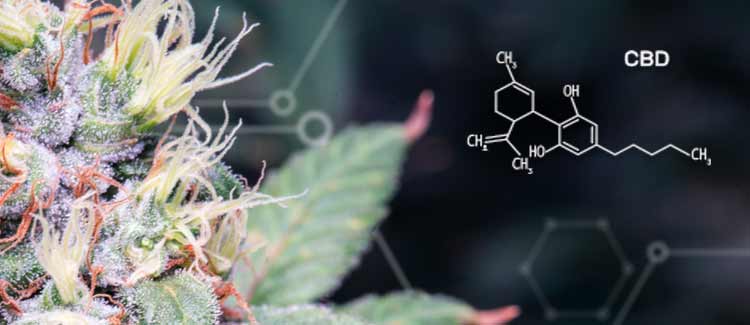
Effects of CBD
Unlike THC, CBD does not cause any psychotropic effects, although some users report feeling more mentally and physically relaxed after ingesting it. Interestingly, it is possible that not only does CBD not bind with CB1 and CB2 receptors, but it actually blocks other compounds from binding with them as well. It has been shown that CBD reduces the effects of THC—both in the short term and the long term.
Potential Benefits of CBD
CBD’s potential to counteract the effects of THC has led to the former being studied in great detail. Research has been conducted, and continues to be conducted, into its relationship to antipsychotic effects. Likewise, there is additional research surrounding other areas of mental health, like anxiety and depression.
Many cannabinoids are studied to discern their relationship with the brain, and potential uses for neurodegenerative disorders—CBD is among them. Significant research has taken place investigating whether or not it may have neuroprotective properties—the ability to slow the degradation of brain cells. As research progresses, the uses of CBD will become clearer.
THCV
THCV, or tetrahydrocannabivarin, is a cannabinoid that is gaining greater popularity. Much like THC, it causes a psychotropic effect. Though little is properly known, it is said to produce a clear, stimulating high. Its interaction with the body has yet to be clearly elucidated, but it is thought to be a neutral antagonist of the CB1 receptor and an agonist of the CB2 receptor. As such, it directly affects the functioning of the ECS, like THC.
Despite its lack of fame, THCV is not a cannabinoid that is particularly rare, nor does it only occur in trace amounts. There are certain strains of cannabis that have been found to contain up to 16% THCV by dry weight.
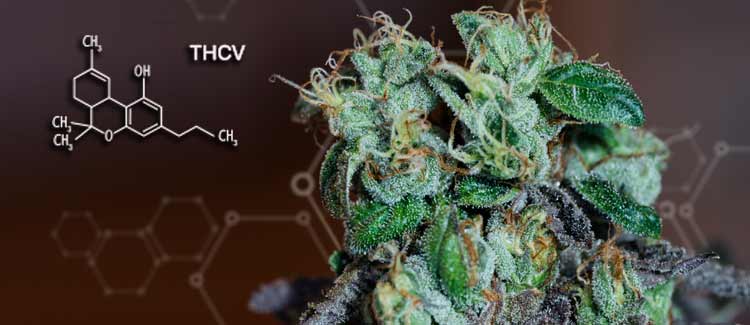
Effects of THCV
The way THCV produces effects is highly unique. At low doses, it acts as an antagonist to the CB1 receptor, meaning it cannot produce a high. However, at higher doses, it switches and becomes an agonist of CB1. This change in behaviour is unusual and not well-understood at present. However, it means that THCV can only produce psychotropic effects at higher doses.
Potential Benefits of THCV
Trials are underway to discover whether THCV could be a useful treatment for weight loss. It is thought that the suppression of CB1 receptors at lower doses could influence appetite and metabolism in a beneficial manner.
Interestingly, in studies using mice, it has been shown that the body does not build up a tolerance to THCV. If this could be replicated in humans, the cannabinoid could potentially be administered as a long-term treatment, without having to increase the dose, making problematic dependencies less likely.
CBDV
CBDV (cannabidivarin) is a similar compound to CBD, but it affects the body in different ways. Though not so well-known in popular culture, it is a fairly well-understood cannabinoid (at least compared to some others). It is thought to appear in much higher concentrations in indica strains of cannabis, particularly indica landrace strains.
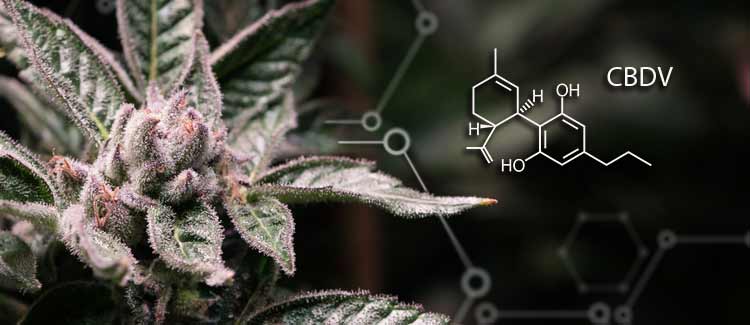
Effects of CBDV
CBDV affects TRPV receptors and the creation of the 2-AG endocannabinoid. Much like CBD, it also appears to block the CB1 and CB2 receptors. TRPV receptors are also called vanilloid or capsaicin receptors because, in the first case, certain beneficial compounds found in vanilla bind to the TRPV receptors; and in the second case, the anti-inflammatory compound capsaicin (found in chillies) also has an affinity for them.
These channels are found throughout the body's nervous system and are believed to be essential in the perception of pain. They are also found in smaller concentrations in the brain, but what purpose they serve there remains a mystery.
It also appears that CBDV may be able to inhibit the activity of diacylglycerol (DAG). This is the primary enzyme involved in the synthesis of 2-AG. By inhibiting this, it reduces activation of the CB1 and CB2 receptors.
Potential Benefits of CBDV
Clearly, with such wide-ranging effects, CBDV could have some potential clinical applications. Regarding TRPV receptors, drugs that deactivate them entirely are considered very dangerous, as they render the user unable to feel pain at all. However, like other receptors, these become desensitised when they are overstimulated, making them less susceptible to pain, without removing it entirely.
As a result, it is believed that CBDV may be able to stimulate these channels in an effective way, without causing any initial pain.
CBG
Cannabigerol appears early on in a cannabis plant’s life. First, there is CBGA, from which all other cannabinoids descend. The “A” simply means it's in an acid form. As time goes on, CBGA becomes one of four cannabinoids: CBDA, THCA, CBCA, and CBG. As CBDA, THCA, and CBCA undergo decarboxylation (heating up), these cannabinoid acids lose their A and become CBD, THC, and CBC, respectively. But as you can see, CBG has already undergone this process. So it’s a fairly stable cannabinoid.
However, CBG does not appear in high concentrations in many cannabis plants. Indeed, it often only gets up to around 1%. But breeders are now growing and stabilising strains of cannabis with higher concentrations of CBG, which will make the cannabinoid easier to study.
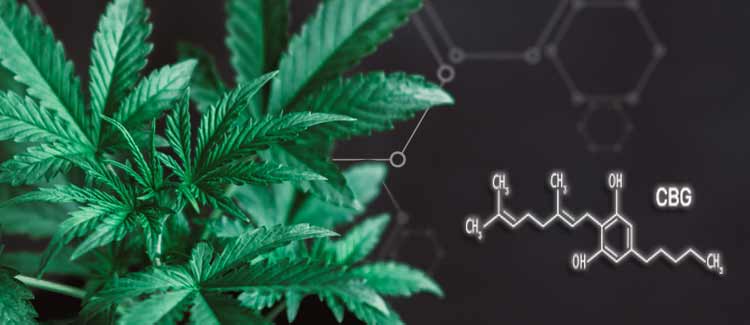
Effects of CBG
Because it only occurs in small amounts, understanding the effects of CBG is fairly difficult. What we do know is that it acts as an agonist to the alpha-2 adrenoceptor, which is involved in pain perception.
Potential Benefits of CBG
Though little is known, it is thought that CBG could have some effect on pain or pain sensitivity. Like CBDV, it may be able to stimulate certain receptors and make them less sensitive to painful stimuli.
CBC
The product of decarboxylated CBCA, cannabichromene (CBC) is among the lesser-understood cannabinoids. It was first discovered in 1966, but due to strict legislation has been the subject of very little research.
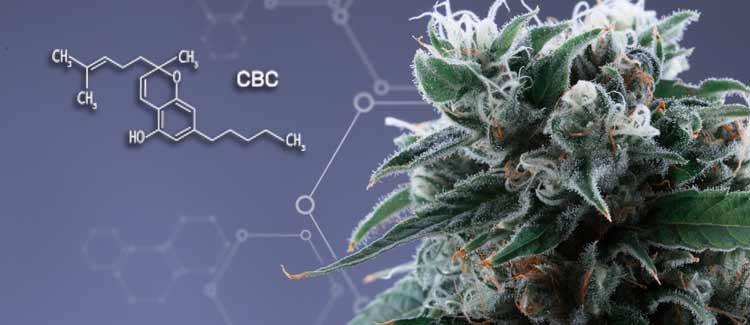
Effects of CBC
It is thought that CBC is non-psychotropic, as it interacts with the CB1 and CB2 receptors in a similar manner to CBD. Likewise, it seems to have an affinity for the TRP channels, much like CBDV.
Potential Benefits of CBC
It is too early to say. Given the receptors with which it has an affinity, and its apparent non-psychotropic properties, it may have potential as a treatment with few side effects, or at least no “high”.
CBN
Cannabinol (CBN) is a compelling cannabinoid due to how it’s created. This illusive cannabinoid only appears in trace amounts in growing and fresh cannabis plants; however, when a plant begins to age beyond what most people would consider maturity (the optimal point at which to harvest), concentrations of CBN begin to rise.
This happens as THCA oxidises and becomes CBNA. When the CBNA is exposed to heat and light, it goes through a process of decarboxylation and becomes CBN.
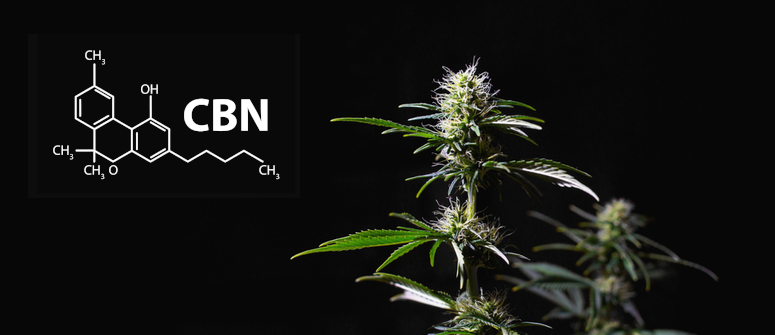
Effects of CBN
CBN interacts with CB1 receptors, CB2 receptors, and TRP channels. This gives it an unusual spread. It seems to have a greater affinity for the CB2 receptor, but it also acts as an agonist to CB1.
Potential Benefits of CBN
It is thought that by modulating the CB1 receptor, CBN may be able to influence appetite. In 2012, this was demonstrated in rats. Otherwise, though little is known about it, its affinity for a range of receptors could offer potentially useful and unusual benefits.
THCA
Tetrahydrocannabinolic acid (THCA) is the precursor to THC. As THCA undergoes decarboxylation, it becomes THC. Interestingly, though some of this occurs in the plant, much of it happens during the smoking, vaping, or cooking process. So your spliff is actually THCA-rich until the flame converts it into THC.
Effects of THCA
Despite being the acidic precursor to THC, THCA does not have the same psychotropic effects as THC, as the molecule has little affinity for CB1 (or CB2 for that matter).
Potential Benefits of THCA
That’s not to say it serves no purpose. Research has been conducted into the potential neuroprotective properties of THCA. That said, the body of research is minimal, so it’s too early to say for sure what its capabilities are. This is true of many cannabinoid acids as, until recently, they haven’t been accessible for study.
CBDA
Cannabidiolic acid (CBDA) is the precursor to the previously mentioned CBD. Like THC and CBC, it comes from CBGA (cannabigerolic acid). Synthase enzymes interact with CBGA to convert the compound into CBDA.
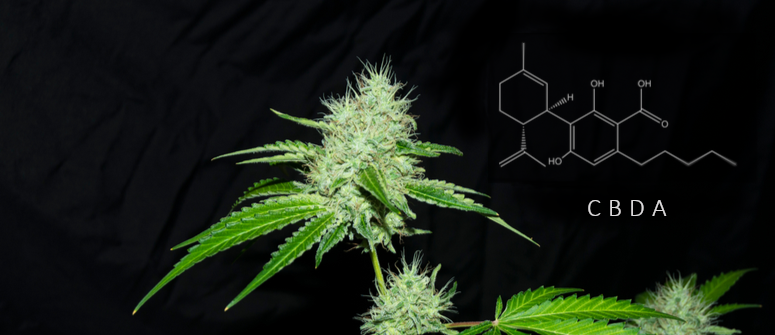
Effects of CBDA
Like CBD, CBDA has no psychotropic effects, as it does not bind to CB1 or CB2 receptors. It does, however, seem to have some effect on serotonin receptors and peroxisome proliferator-activated receptors (PPARs).
Potential Benefits of CBDA
Much like many cannabinoid acids, research is minimal, and the potential uses of CBDA are yet to be disclosed. That said, researchers appear particularly interested in this cannabinoid, and studies are underway into its therapeutic potential for conditions such as anxiety, inflammation, and nausea, to name a few.
CBGA
Cannabigerolic acid—the mother of all cannabinoids. This is the first cannabinoid to appear in cannabis, and the one from which all other 113 (and counting) descend. It forms an early protective function and causes cell necrosis, telling the plant which parts of itself to kill off. Eventually, that function can serve to get us blazed.
Effects of CBGA
CBGA has no psychotropic effects in itself, but it manages to give rise to the manifold other effects that cannabis can express.
Potential Benefits of CBGA
Though research is limited, the little there is shows that CBGA may inhibit the enzyme aldose reductase, which is related to cardiac problems, and that it may have a cytotoxic effect on cancer cells.
Minor Cannabinoids Are on the Rise
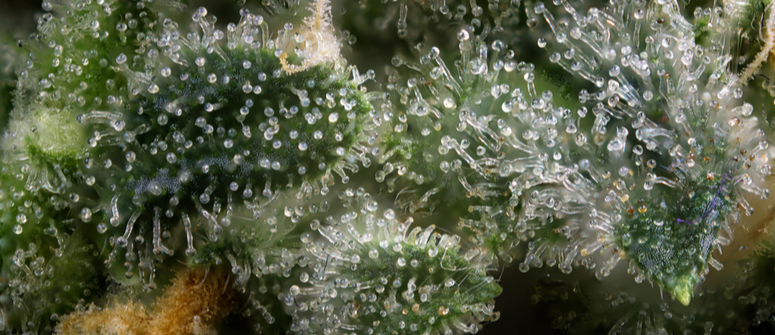
Both in research and in cannabis consumption, minor cannabinoids and cannabinoid acids are gaining far more attention. Gone are the days when people wanted their weed to exclusively contain as much THC as possible. Now, there are whole ranges with little to no THC present whatsoever. As breeders increase the concentrations of certain cannabinoids, it will become clearer and clearer what they may offer us. Exciting times!




